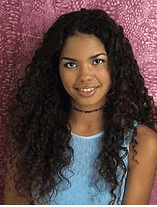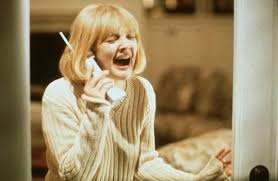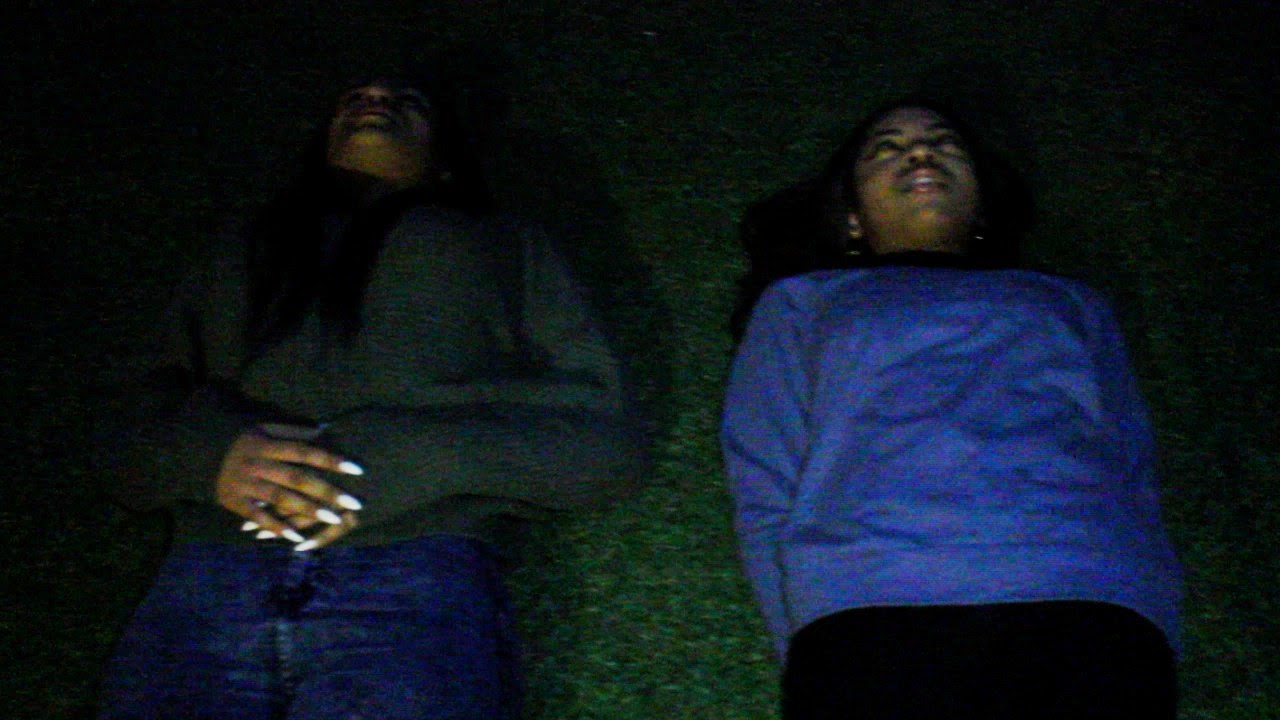Ways in which my media product use, develop or challenge forms and conventions of real media products:
The title of the film
When choosing the title for our horror film opening, my group and I wanted to keep it simple and a reflection of the real problem in the movie. Such as the real media product 'Carrie' which is a horror film named after the main problem/protagonist in the film.
Title font and style
Just like the simplicity of the title, we chose to keep the fonts white which also purposely mirrors the protagonist in our film as she is wearing a simple white gown to emulate her "purity".This challenges the conventions of horror films as actual opening sequences often have titles written in spooky, bloody (often red) chilling fonts. We Kept the title on a black background like many horror films as we thought with the simplicity of the title and font, some form of suspense and the dark, spooky horror theme needed to be portrayed in it.
Setting/location
From my initial horror film conventions research, the most traditional settings for horror films were those set in dark abandoned, isolated places which emphasise on isolation and the victims being alone without any help. The two settings that are shown in my horror film opening both challenge and develop these conventions. As shown in the first photo, our first scene is set in broad day light, challenging the conventions as we chose to not go with the typical dark rainy atmosphere but instead subtly try to assure the audience before they are introduced to the harsh mysteries of Carolina. Also, so that our audience are fascinated in finding out who Carolina is and why they are watching the mysterious young girl swing obscurely in broad day light, we decided to have the villain in plain view - not sneaking in a dark corner as seen in a large amount of horror films.
However, the second photo shows the second location of our horror film opening which is set in Carolina's bedroom. Which is a popular location for horror films, as many are set in the homes of the victim's. By using the bedroom as a location, we tried to bring on a sense of normality - Carolina being a young girl and living in her family house which hopefully made our audience somewhat uncomfortable and nervous with the thought "no one is safe; even in their own home" subconsciously lingering in the back of their mind.
Costume and Props
My group and I knew the right costumes were essential as they let the audience know what kind of character they are but we decided to challenge the conventions by dressing our villain in white as a lot of horror film villains are dressed in dark colours to imply that they are dangerous. We dressed our villain in white to reflect on her youthful age, and the innocence and purity of children but to also have the villain stand out with a distinct look to make it easier for the image of the villain to stay in our audiences head for longer than they want.
The victims in our horror film opening are dressed in light dull colours as shown in the second photo to emphasise that they are the victims and to evoke sympathy from the audience. This generally conforms to the conventions.
We chose to put a red anklet on our villain to just act as a witchery charm and signal to the audience who she is what horrific events she has caused throughout the film. We chose the anklet to be the colour red as it typically suggest danger and blood etc.
Camerawork and editing
Throughout our horror film opening, we filmed Carolina using different shot types and camera angles to draw the audience into the action. The photo shows a specific frame where we chose to use the dissolve transitioning tool to indicate to our audience that what was just shown previously was a foreshadow of the future/a dream. This develops the horror film conventions as dissolve transitions are often used in order to create an eerie uneasy feeling. We also used; a pan shot to reveal our dead victims to the audience as we felt it would be a mysterious way to expose them; a tilt to reveal our villain from the toes upwards, and many close-ups of our villain to connote fear and suspicion onto our audience.
Story and how the opening sets it up
We wanted to challenge the horror film conventions so we thought of an opening that would ensure the audience have to continue watching in order to really get a sense of what is happening and how our young villain is going to carry out what she is told/showed to do in her dream. We purposely chose to show the outcome of her future killings in the opening so that the audience are left wondering why and how the victims were killed, which forces the first 30 seconds of our opening to be a slight foreshadow of the rest of the film. This develops some forms of real horror films such as 'Sinister' which was our main inspiration for our opening.
Genre and how the opening suggests it
Throughout our opening there is spooky tension building non-diegetic sounds playing to help frighten and create a more intense feeling on the audience. This is always essential in most horror films and therefore we conformed to the conventions of sounds in horror films. The sounds we used makes it obvious that our opening falls into the horror genre.
As well as that, the lighting in parts of our horror film opening suggests the thriller/horror genre of our film as we decided to film parts of it with very faint light - adding to the spookiness of the opening.
My group and I also used various camera angles and editing techniques such as high angled shots, tilts, close-ups and dissolves which again, helps suggests the horror genre of our opening.
How characters are introduced
The protagonist of our horror film opening is introduced obscurely with a medium close up shot which we intentionally chose to do with the hazy picture as we wanted to portray uncertainty and anxiety which conforms to horror film conventions as suspense and tension is essential.
Our victims were introduced using a panning shot, where they were mysteriously introduced, slowly revealing mise-en-scene; their lifelessness shown in their faces, the setting and the costume and colours they are wearing. Our panning shot was also filmed from a slightly higher angle making the audience look down upon them, subtly suggesting that they are clearly the victims as well as grasping this from the mise-en-scene. This instantly gives the spooky/horror vibe horror films are guaranteed to exhibit.


























